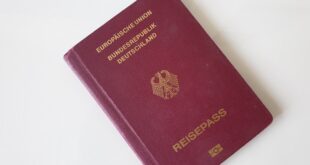Choosing which party to vote for in a German election could be a difficult task with 47 of them contesting the polls.
The thorough way to go about it would be to read the manifesto of each of the parties. But who has time for that with the Bundestag elections just a few days off?
There is however an online tool that helps voters, especially young ones who are voting for the first time, to make their choice of which party to vote for.
Wahl-O-Mat, developed by the Federal Agency for Civic Education (Bundeszentrale für politische Bildung or bpb), is a free question-and-answer online tool that finds out which party is most likely to represent your interests.

With Wahl-O-Mat, users are presented with 38 thesis statements which they can answer with “agree”, “disagree”, “neutral” or “skip”. Thirty-nine of the parties contesting the election have answered the Wahl-O-Mat theses.
READ ALSO What you should know about Germany’s general election
Once users have answered all the questions, their answers are compared with the parties’ answers to the same questions. This gives a picture of which of the parties is closest to one’s own position.
Though the questions touch on the major political issues that are important for the federal election, they do not cover the entire campaign issues of all parties. Hence, the recommendation of Wahl-O-Mat is a rough guide.
The questions are based on the party programmes of the parties as well as their election manifestos. They are made available to the parties in advance, who can then answer them and affirm their positions.
The Wahl-O-Mat was first launched for the 2002 Bundestag elections, and since 2003 it has also been available for state elections and the elections to the European Parliament.
The Federal Agency for Civic Education points out that Wahl-O-Mat only serves to provide information about the parties and the election and does not in any way constitutes a recommendation of which party to vote for.
If you don’t yet know which party or parties to vote for, the Wahl-O-Mat is a good decision-making aid.
Femi Awoniyi
To use Wahl-O-Mat click here
 THE AFRICAN COURIER. Reporting Africa and its Diaspora! The African Courier is an international magazine published in Germany to report on Africa and the Diaspora African experience. The first issue of the bimonthly magazine appeared on the newsstands on 15 February 1998. The African Courier is a communication forum for European-African political, economic and cultural exchanges, and a voice for Africa in Europe.
THE AFRICAN COURIER. Reporting Africa and its Diaspora! The African Courier is an international magazine published in Germany to report on Africa and the Diaspora African experience. The first issue of the bimonthly magazine appeared on the newsstands on 15 February 1998. The African Courier is a communication forum for European-African political, economic and cultural exchanges, and a voice for Africa in Europe.

































